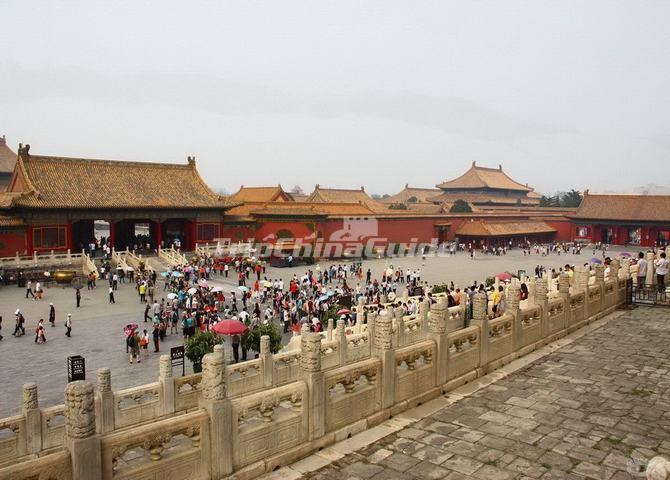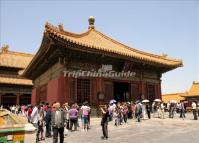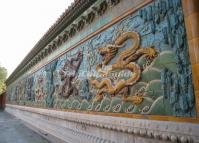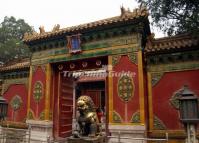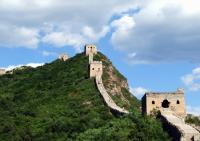Gate of Supreme Harmony (Taihe men)
Three sets of stairs lead up to the 3.4 meter high white marble terrace. In front of the Gate of Supreme Harmony are symbols of legitimacy to rule: four bronze ding tripods, a miniature stone pavilion and a stone case that stand for the documents and seals of imperial authority. Completing the assemblage is the largest pair of cast-bronze lions in the palace which aimed to inspire awe and respect.
During the Ming dynasty, emperors held morning audience here and accepted memoranda from officials. The Hongxi (r.1425-1425), Xuande (r. 1426-1435), and Zhengtong (r. 1436-1449) Emperors of the Ming dynasty were enthroned here. In 1644 following the Manchu conquest, it was at this gate that the Shunzhi Emperor (r. 1644-1661) ascended the throne and issued the proclamation of Qing dynasty rule over the country.







